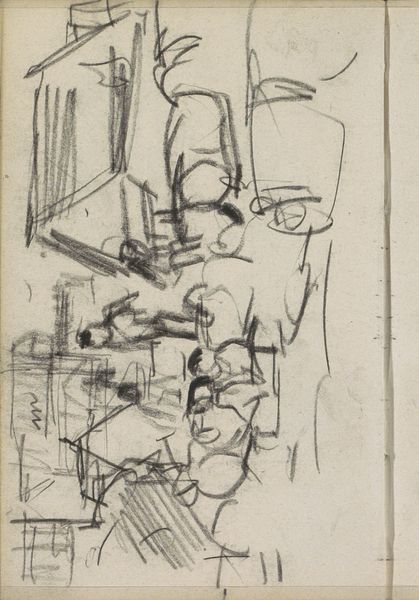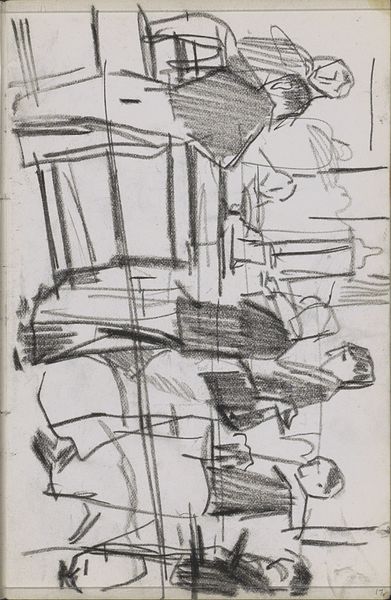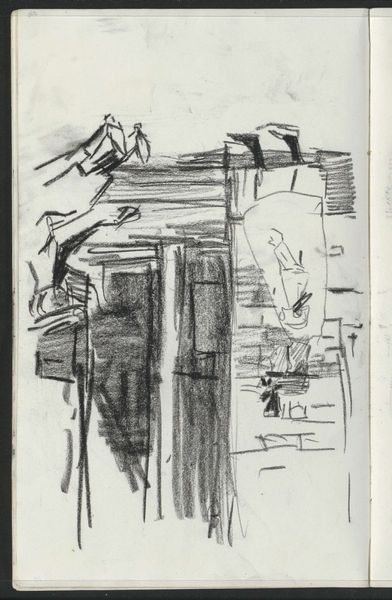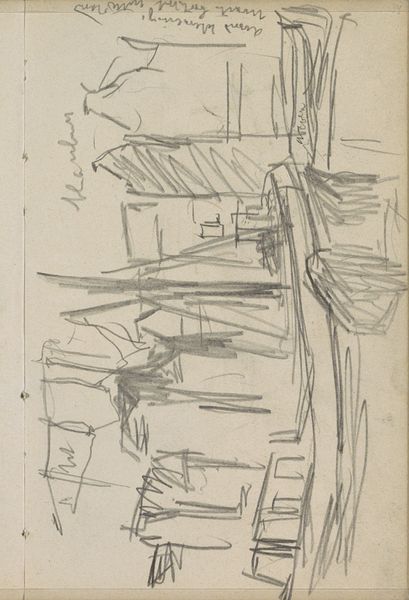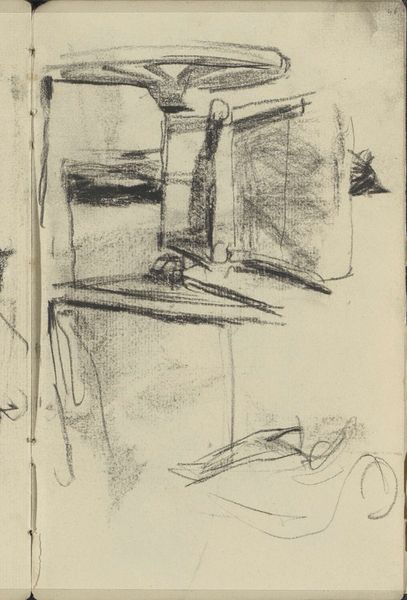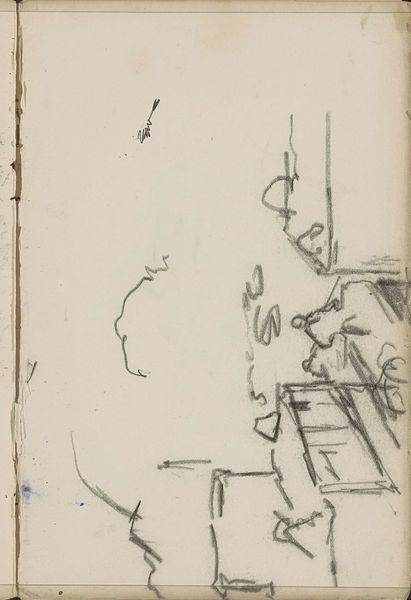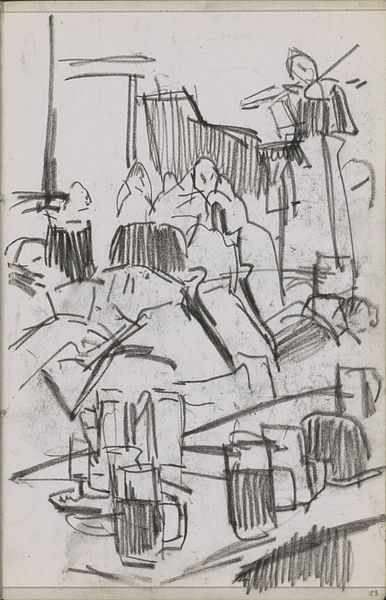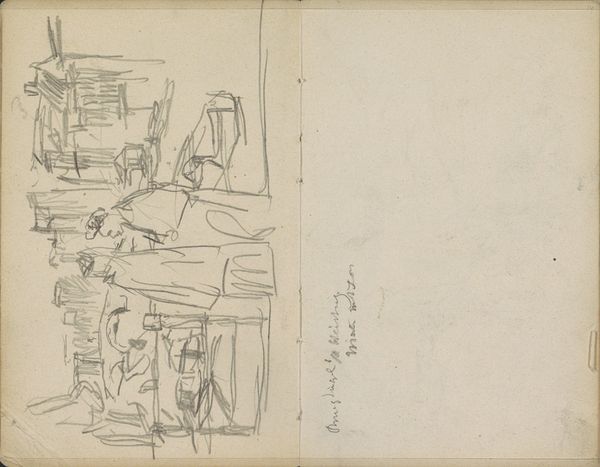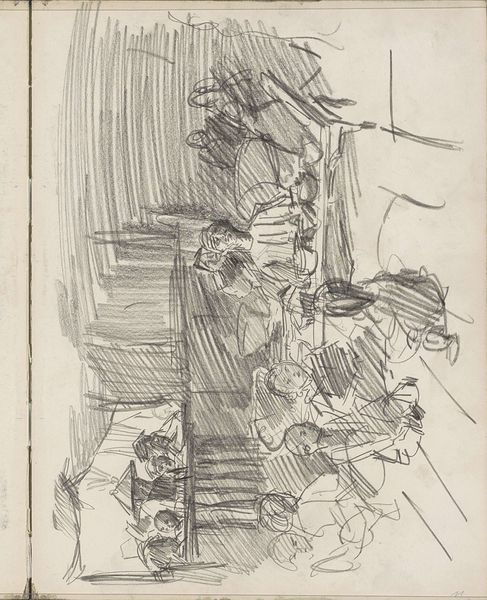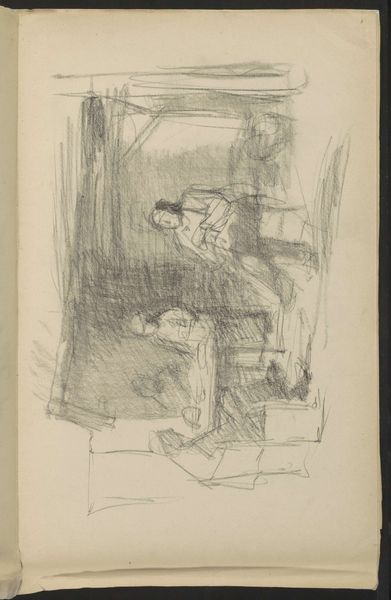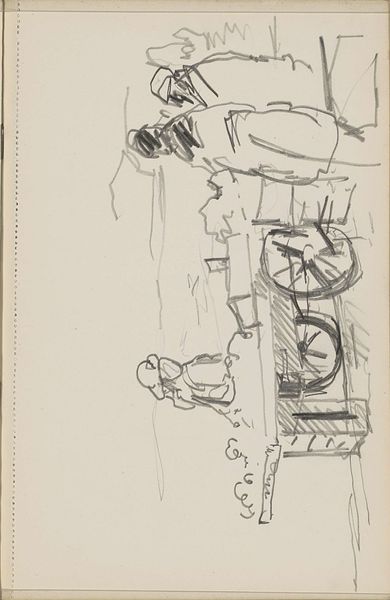
Rijtuig in het Beursstraatje bij het Rokin te Amsterdam Possibly 1907 - 1911
0:00
0:00
#
amateur sketch
#
pen sketch
#
sketch book
#
personal sketchbook
#
sketchwork
#
ink drawing experimentation
#
pen-ink sketch
#
sketchbook drawing
#
sketchbook art
#
initial sketch
Copyright: Rijks Museum: Open Domain
Editor: Here we have George Hendrik Breitner's "Rijtuig in het Beursstraatje bij het Rokin te Amsterdam," dating probably from 1907 to 1911. It looks like it's an ink sketch from a sketchbook. There’s a wonderful sense of movement, but it's so fleeting. What captures your attention in this quick study? Curator: Well, considering Breitner's background as a photographer, I see this sketch as an early form of street photography. Think about the socio-political context: Amsterdam rapidly industrializing, a burgeoning middle class, and an increased interest in depicting modern life. Breitner isn't just drawing a carriage; he's capturing a moment in the urban experience. How does this informal, almost private, glimpse into urban life challenge more conventional portraiture of the period? Editor: That's fascinating. I hadn’t considered it in relation to street photography. The sketch’s immediacy seems to reject the posed formality typical of portraiture then. But was this casual style seen as less "serious" art at the time? Curator: Precisely. Academic art institutions prized finished, polished works. Breitner, influenced by impressionism, embraced a looser, more spontaneous approach. His sketchbooks, like this one, became spaces for experimentation, directly challenging the established art market and its preferences. He's recording the fleeting moments of everyday life available to an artist. This contrasts with traditional art production’s need to present a formal or posed reality for wealthy clients. How might such accessibility affect perceptions of art's value and role in society? Editor: I see. It becomes almost a democratizing force, capturing scenes and moments available to the public, not just the elite. It challenges elitism. Curator: Exactly. It forces us to consider who gets to be represented and who determines what art is worthy of attention. Considering this context enriches the sketch's significance. Editor: This completely changed my initial understanding. Thanks! Curator: Indeed. Art is never created in a vacuum.
Comments
No comments
Be the first to comment and join the conversation on the ultimate creative platform.
